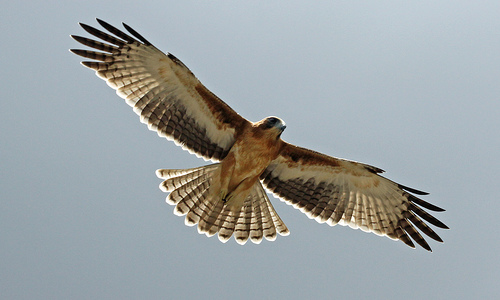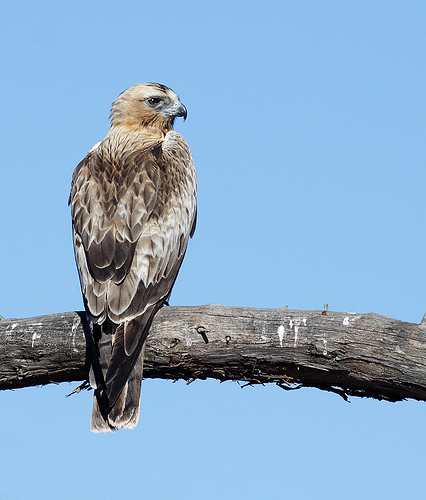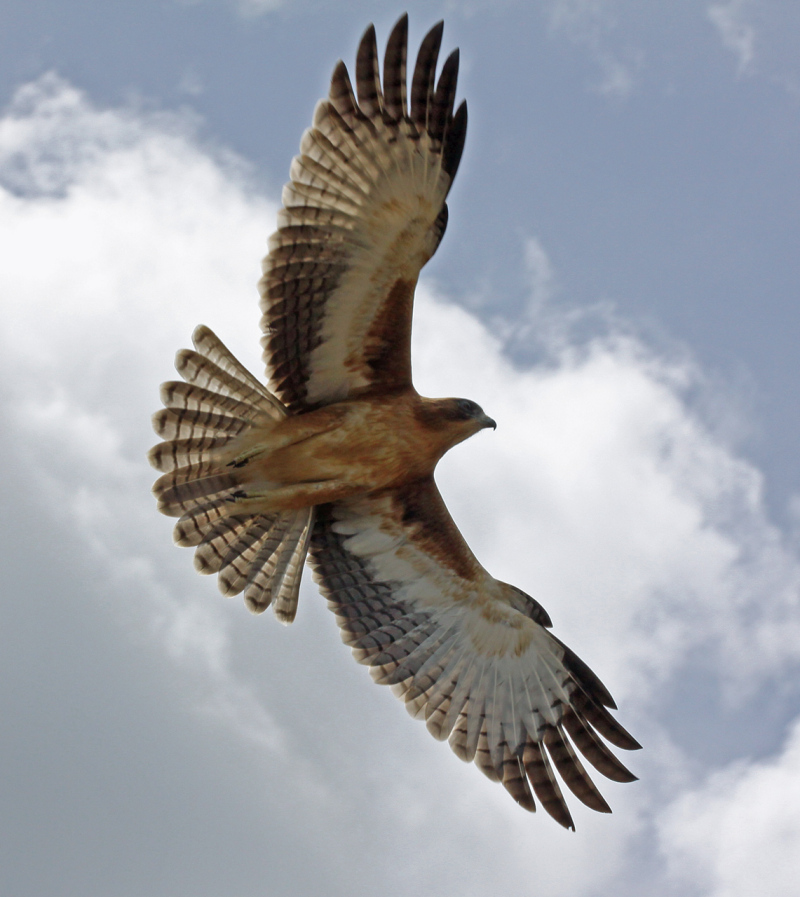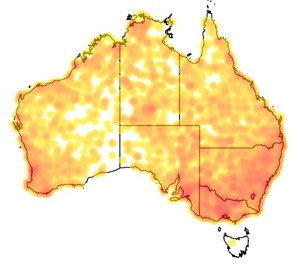Colours
Distinguishing features
It is small and stocky with a broad head. It has fully feathered legs and a square-cut, barred tail. Males having longer wings in proportion to their bodies than do females. It is a powerful bird and during flight has strong wing beats, it glides on flat wings and it soars on slightly raised or flat wings.
It occurs in light and dark colour forms and generally these colours change with age. The most common is the light form which has dark brown on the back and wings with black streaks on the head and neck, and a sandy to pale under body. The dark form of this eagle is similar except the head and under body is usually darker brown or rich rufous.
The sexes are similar with females being larger and typically darker. Juveniles are similar to adults but tend to be more strongly rufous in colour with less contrast in patterns. (Wikipedia)
Size
- From 50 cm to 55 cm (Length of specimen) - applies to Females
- From 45 cm to 48 cm (Length of specimen) - applies to Males
Wingspan
- Up to 120 cm
Synonyms
Distribution
Distribution and habitat preferences
It has a large range and can be found in most parts of Australia, except heavily forested parts of the Great Dividing Range.
Typical habitat includes woodland or open forest. Higher abundance of the species is associated with hillsides where there is a mixture of wooded and open areas such as riparian woodlands, forest margins and wooded farmland. (Wikipedia)
Diet
They hunt live prey and occasionally take carrion. The eagles search for prey by soaring (up to 500 m altitude) or by using an elevated exposed perch. It is an agile, fast hunter swooping to take prey on the ground in the open but also from trees and shrubs.
It feed on small birds, mammals and reptiles and supplement its diet with large insects on occasion. (Wikipedia)




